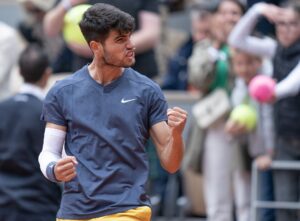The French Open is the second Grand Slam of the year. It is the only Major played on clay courts. Whilst this makes it more unique on the surface than New York and Australia, it is arguably the worst of the Grand Slam tournaments.
The Grand Slams are meant to be the pinnacle of the tennis season. The French Open however, doesn’t ooze this prestige like the other Slams do. There are a plethora of reasons for this and this article will look at four reasons why the French Open is the worst of the four Grand Slams.
1. Lack of innovation
The 2019 Roland Garros has shown how stuck in the past the French Open is compared to the other Majors. From the lack of a roof to the refusal to use Hawkeye, it has fallen behind the other Grand Slams.
Starting with the roof, the 2019 French Open has shown how ill-equipped the tournament is to deal with the elements. The rain caused a logistic nightmare for the tournament. Whilst rain delays are historically tied to Wimbledon, the French Open is clearly prone to these delays as well.
In contrast, however, Wimbledon has adapted to this problems by putting roofs on two of their major courts to combat these problems. The French Open, however, has done no such thing, and the delays and cancellations of whole match days has proven poor showing for the tournament this year.
Secondly, the refusal to use Hawkeye is also a con of the tournament. As clay courts leave more pronounced ball marks, many felt it nontraditional to implement the review system to the French Open.
However, this doesn’t appear as a stance in favour of tradition; it just seems a tad pretentious. One mustn’t forget, that Wimbledon has modernized without removing any of its traditional values. So why can’t the French Open do the same?
2. The Crowd (Or Lack of)
The crowd, or lack thereof, has perturbed countless fans and pundits. Empty seats during lesser matches is expected at all the Grand Slams. Half empty crowds for a semifinal match featuring Fedal is not.
Compare this to the other Slams, where there would be hardly an empty seat in the house for these matches, the French has consistently suffered from this issue.
There are multiple reasons for this. Firstly, there are a number of seats gifted to corporations which aren’t always filled. The tournament itself has indicated its awareness of this issue, and is in discussion of addressing this problem.
Although it is good that they are tackling this issue, they should realize that if these corporate seats aren’t always being filled they should be offered to real tennis fans, or even scrapped altogether.
Secondly, the rain is also an issue for lower attendances. Regardless of who is playing, sitting in the rain is no fun for anyone. As mentioned, the rain has jeopardized this years tournament for both players and fans.
Northern France may be hot in the midsummer; it is still clearly subject to rainy weather during May and early June. Until a roof is built for at least the Phillipe Chatrier court, the rain will continue to lessen attendances for the big matches.
3. Predictability
The French Open is the most predictable of the four Majors. This is largely down to a certain Rafael Nadal. Having only lost twice at the French, Nadal has dominated the Slam like no other. However, the predictable nature of the French Open is deeper than that.
Nadal is undoubtedly the best clay court player ever. However, it must be noted that it is arguably the least competitive surface. The vast majority of the top 25 players would say either hard or grass are their best surfaces, with very few saying clay.
This is just as prevalent when looking at the top 10s over the last decade or so. Although this isn’t the French Open’s fault, it has meant that there are less opportunities for a great upset against Nadal.
Compare this to the other three Majors. Hard and Grass courts have a far greater number of elite specialists, meaning that the standard is higher. Which inevitably makes these Grand Slams more competitive, and ultimately more interesting to watch.
4. Boring Surface
Clay is one of the most divisive surfaces in tennis. Very few feel totally comfortable on it, and it takes up a large chunk of the season.
It is the slowest surface in tennis. And because of that it fosters a grinding play style. This essentially means that the attacking oriented players are largely neutralized.
Whilst this isn’t necessarily a problem, it does mean the games are less about beautiful shotmaking, and more about not making the first mistake.
After getting over the novelty of players sliding around the court, it has little more to offer. Especially when considering that players even slide on hard courts.
Furthermore, attacking tennis is undoubtedly the most popular style for fans to watch. As aforementioned, the slow clay courts don’t allow for this, making the matches less enjoyable.
Main Photo from Getty






